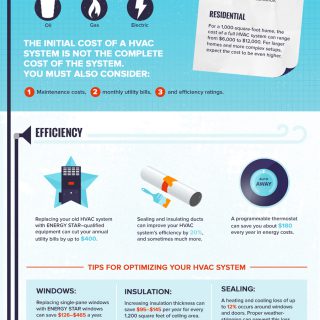Heatpump will certainly be a vital technology for decarbonising heating. In a circumstance consistent with federal governments' revealed energy and climate commitments, their international capacity increases by 2030, while their share in heating rises to one-quarter.
They work best in well-insulated homes and count on power, which can be supplied from a sustainable power grid. Technological innovations are making them much more reliable, smarter and cheaper.
Gas Cells
Heat pumps utilize a compressor, cooling agent, coils and fans to relocate the air and heat in homes and devices. They can be powered by solar energy or electrical power from the grid. They have been obtaining popularity due to their low cost, silent operation and the capability to create power during peak power demand.
Some business, like IdaTech and BG MicroGen, are servicing gas cells for home heating. These microgenerators can change a gas boiler and produce several of a home's electric demands with a link to the electrical power grid for the remainder.
However there are reasons to be skeptical of using hydrogen for home heating, Rosenow says. It would be expensive and ineffective contrasted to various other modern technologies, and it would certainly contribute to carbon emissions.
Smart and Connected Technologies
Smart home innovation permits house owners to connect and manage their devices remotely with the use of smart device apps. As an example, smart thermostats can discover your home heating choices and automatically adjust to optimize power intake. https://drive.google.com/drive/folders/1pDdqGX_DNdFGYu2De2YD-udjrR-phdUP?usp=drive_link can be regulated with voice commands and immediately switch off lights when you leave the room, reducing energy waste. And smart plugs can keep an eye on and manage your electric usage, allowing you to recognize and restrict energy-hungry devices.
The tech-savvy house illustrated in Carina's meeting is a great picture of just how owners reconfigure room home heating techniques in the light of new smart home technologies. They rely upon the tools' automated functions to accomplish everyday changes and concern them as a practical means of performing their home heating practices. Thus, they see no factor to adapt their techniques better in order to enable adaptability in their home energy need, and interventions aiming at doing so may deal with resistance from these families.
Power
Given that heating homes make up 13% of US emissions, a button to cleaner options can make a big distinction. However the innovation deals with obstacles: It's expensive and requires extensive home renovations. And it's not constantly suitable with renewable energy sources, such as solar and wind.
Up until lately, electrical heat pumps were as well expensive to take on gas designs in a lot of markets. Yet new developments in design and materials are making them more cost effective. And much better chilly climate efficiency is allowing them to operate well also in subzero temperature levels.
The following action in decarbonising heating might be the use of warmth networks, which draw heat from a main source, such as a neighboring river or sea inlet, and distribute it to a network of homes or structures. That would reduce carbon emissions and allow homes to take advantage of renewable energy, such as environment-friendly electrical energy from a grid supplied by renewables. This choice would be much less pricey than changing to hydrogen, a fossil fuel that calls for brand-new framework and would only reduce carbon dioxide exhausts by 5 percent if coupled with improved home insulation.
Renewable resource
As power prices drop, we're beginning to see the exact same trend in home heating that has driven electric cars and trucks into the mainstream-- but at an even much faster rate. The solid environment situation for electrifying homes has actually been pushed additionally by brand-new study.
Renewables make up a substantial share of modern warm intake, however have actually been offered limited plan focus worldwide compared to various other end-use sectors-- and even much less attention than electrical energy has. In https://thefifthestate.com.au/innovation/commercial/how-hvac-systems-can-be-modified-to-reduce-sars-cov-2-virus-transmission/ , this shows a mix of consumer inertia, divided motivations and, in lots of countries, aids for fossil fuels.
New modern technologies might make the shift less complicated. For instance, heat pumps can be made extra energy effective by changing old R-22 cooling agents with brand-new ones that don't have the high GWPs of their predecessors. Some professionals likewise imagine area systems that attract heat from a close-by river or sea inlet, like a Norwegian arm. The cozy water can after that be made use of for heating & cooling in a community.
